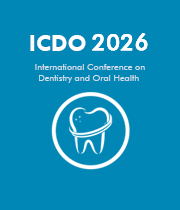Title: Hospitals vs outreach clinics: Improving socioeconomic inequalities in access to orthodontic treatment
Abstract:
Background: It is well established that there are socio-economic inequalities in oral health. Sheffield is a divided city; life expectancy is nearly 10 years greater for postcodes in the south west side of the city than for postcodes in the northeast side of the city. Sheffield has only one dental hospital providing hospital orthodontic treatment to complex IOTN4 and IOTN5 patient groups. The incidence of more complex malocclusions is assumed to be the same across all socio-economic levels.
Aim: To examine a cohort of orthodontic patients referred to the Charles Clifford Dental Hospital (CCDH), and determine if there is an equal distribution across all socioeconomic levels.
Target: an even distribution of IMD deciles across all patients referred to a hospital orthodontic setting.
Materials and methods: Data for new patient referrals to the CCDH orthodontic department from October 1st 2019 - 30th March 2020 were gathered. There were 342 patients, who had been accepted for an orthodontic assessment and lived in the Local Sheffield Authority (LSA). The postcode was used to calculate their level of deprivation using the English Indices of Deprivation (IMD) 2019 Deciles. The postcodes were mapped to see their geographical distribution. The accessibility of the CCDH was considered by randomly selecting a postcode in the least and most deprived areas and assessing the cost and availability of different modes of transport.
Results: The range of IMD’s from our cohort shows that the CCDH orthodontic department gets referrals from patients with different levels of deprivation. Half of the patients referred live in the 30% most deprived areas in England. Analysis of the cost and availability of different modes of transport to the CCDH shows that patients from more deprived postcodes have to travel further, for longer and pay more to attend their appointments. Patients consider affordability and location as the main reason for not attending annual dental visits. Hospital orthodontic treatment is aimed at patients with severe or complex treatment needs, or patients with special needs or significant medical history. These patients will experience further barriers to attending appointments, e.g. physical barriers, hospital burnout and financial barriers.
Conclusion: The CCDH received referrals from patients across all socioeconomic levels, with a greater proportion coming from areas with high levels of deprivation and from the east side of Sheffield. There is an unequal distribution of patients, with more being referred from the east side of Sheffield, however the CCDH and other orthodontic practices are located on the west side of Sheffield. A reconfiguration of the location and spread of orthodontic services in Sheffield would be useful and could improve the accessibility of orthodontic treatment. Since completing this service evaluation, an outreach Orthodontic clinic, staffed by CCDH clinicians has now been set up at Wheata Place clinic, which is located in the North-East side of Sheffield in one of the 20% most deprived areas in England.




